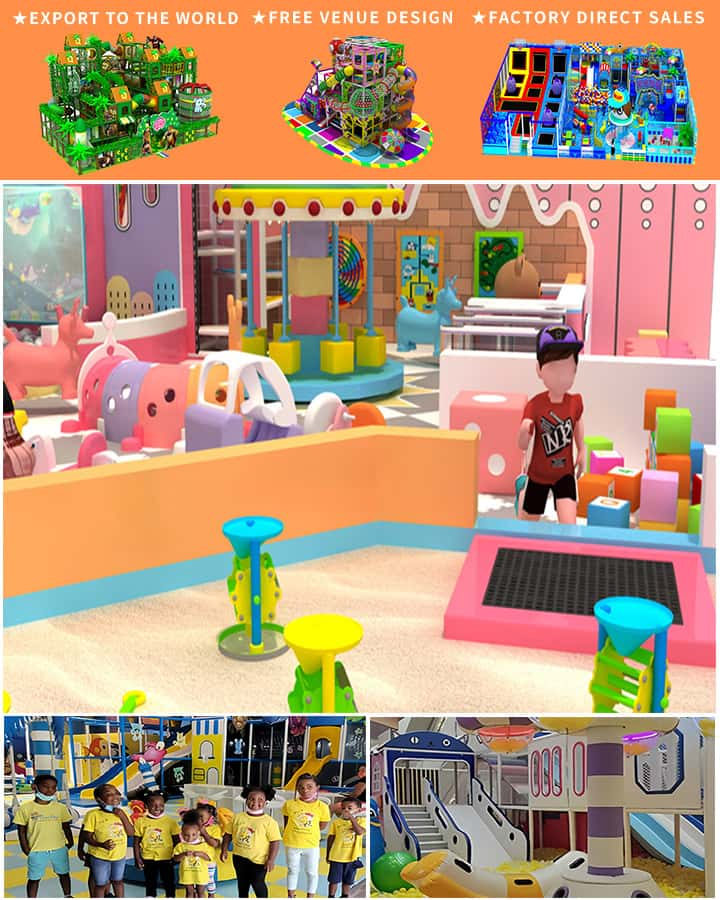Amusement parks are magical places that bring joy, excitement, and unforgettable memories to millions of people around the world. These thrilling destinations rely heavily on state-of-the-art equipment and attractions to deliver the adrenaline rush and fun experiences their visitors crave. One crucial aspect of designing and maintaining these amusement park marvels is the availability of accurate design files, specifically DWG (Drawing) files. In this article, we will explore the importance of amusement park equipment DWG files, where to find them, and how they contribute to the overall safety and efficiency of these incredible attractions.
The Significance of DWG Files in Amusement Park Design
DWG files, developed by Autodesk for use with its AutoCAD software, serve as a universal file format for design and drafting purposes. These files encapsulate detailed 2D and 3D models of various elements, allowing engineers and designers to create precise representations of amusement park equipment. From roller coasters to Ferris wheels and carousels, each piece of equipment requires meticulous planning and design to ensure safety, functionality, and aesthetic appeal.
Precision and Consistency
One of the primary benefits of using DWG files in amusement park equipment design is the precision and consistency they offer. These files provide exact measurements, angles, and specifications, which are essential for constructing reliable and safe attractions. Any deviation from the designed blueprint could lead to structural weaknesses or even catastrophic failures, posing significant risks to riders and staff alike.
Efficiency in Planning and Construction
DWG files also play a vital role in streamlining the planning and construction processes. Designers can easily make modifications and updates to the digital models before any physical work begins, saving time and reducing costs associated with errors and rework. Moreover, these files facilitate communication and collaboration among different teams involved in the project, such as architects, engineers, and fabricators, ensuring everyone works with the same accurate information.

Where to Find Amusement Park Equipment DWG Files
Obtaining high-quality DWG files for amusement park equipment can be a challenging task, especially since these designs are often proprietary and closely guarded by manufacturers. However, there are several avenues you can explore to acquire or create these essential files.
Manufacturer Websites and Resources
Many amusement park equipment manufacturers provide design files or detailed technical documentation on their official websites. While these resources may require a subscription or purchase, they offer access to authentic, manufacturer-approved designs. Some companies also offer CAD block libraries or customization services upon request.
Online CAD Libraries and Forums
Several online platforms specialize in sharing CAD files, including amusement park equipment DWGs. Websites like GrabCAD, BiblioCAD, and TurboSquid host vast collections of user-uploaded designs, many of which are freely accessible. Additionally, professional forums and communities dedicated to CAD design and drafting can be valuable sources of information and files. Engaging with these communities can help you connect with experienced designers who might share their expertise or even provide direct assistance.
Custom Design Services
For complex or unique amusement park projects, hiring a professional design firm or individual CAD designer may be necessary. These experts can create custom DWG files tailored to your specific requirements, ensuring compliance with industry standards and safety regulations. While this option may involve higher costs, it guarantees a personalized approach and access to specialized knowledge.
Safety and Compliance
When working with amusement park equipment DWG files, it’s crucial to prioritize safety and adherence to relevant standards and regulations. Amusement rides and attractions are subject to strict guidelines imposed by organizations such as the American Society for Testing and Materials (ASTM) and the European Committee for Standardization (CEN). Ensure all designs comply with these standards to mitigate risks and protect riders.
Regular Updates and Inspections
Even after the initial design and installation, continuous monitoring and maintenance are vital to ensure ongoing safety and performance. Regularly update DWG files to incorporate any changes or improvements mandated by regulatory bodies or resulting from incident investigations. Conduct routine inspections and audits of the equipment to identify potential issues early and address them promptly.
In conclusion, amusement park equipment DWG files are indispensable tools in the design, construction, and maintenance of these thrilling attractions. They provide the precision, consistency, and efficiency needed to create safe and enjoyable experiences for park visitors. By exploring various sources for obtaining these files and prioritizing safety and compliance, amusement park operators and designers can ensure their equipment meets the highest standards and delivers endless delight to audiences of all ages.




